#aggressive front fascia
Text
2024 Cupra Formentor VZe PHEV - TDP Review
The introduction of the 2024 Cupra Formentor VZe PHEV to the Australian market represents a significant step forward in the evolution of SUVs, combining sportiness with eco-consciousness. As a medium-sized SUV classified under the KM MY24 category, this vehicle is not just about getting from point A to B; it’s about making a statement while doing so. Manufactured in Spain and arriving with a…
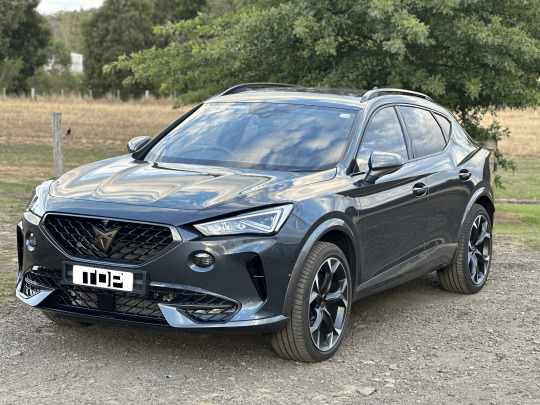
View On WordPress
#1.4L Turbo 4 Cylinder engine#110 kW power#19-inch alloy wheels#2023#2024 Cupra Formentor VZe PHEV#245/40 R19 94W tires#250 Nm torque#5 seats#5 years warranty#6 speed auto direct shift transmission#990 AUD#active info display#adaptive chassis control#adaptive cruise control#advanced driver assistance systems (ADAS)#advanced technology#aggressive front fascia#ambient interior lighting#ANCAP 5 stars#assertive stance#Australian market#black roof rails#bold dynamic exterior design#Climatronic 3-zone automatic climate control#CO2 emissions 43g/km#comprehensive technology#coupe-like roofline#customizable ambient lighting#distinctive grille design#dynamic headlight range control
0 notes
Text

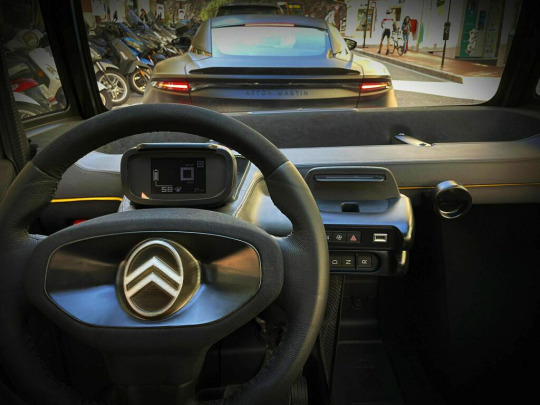



Citroën Ami, 2023, by Castagna Milano. The Italian coachbuilders have been commissioned to create a version of Citroën's electric microcar to match an Aston Martin DBS Superleggera. The owner of the Aston wanted to Ami for his 16-year-old son. Modifications include redesigned front and rear fascias with more aggressive surfacing with skid plates in glossy black and matte-black bodywork. There are also glossy black alloy wheels to match the DBS. The interior has been upgraded with black Alcantara and leather featuring yellow piping and Citroën's emblem has had a makeover with a new oval design. Castagna Milano will offer the upgrade kit to other other Ami owners with prices ranging from €600 to “several thousands” of euros.
#Citroën#Citroën Ami#Castagna Milano#coachbuilt#EV#electric microcar#luxury car#custom car#modified car#2023
205 notes
·
View notes
Text
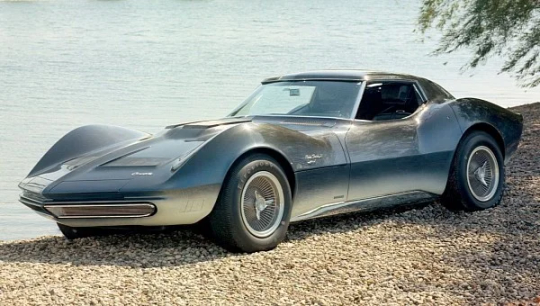
From Mako Shark to Manta Ray: The Evolution of the Most Influential Corvette Concepts
Published: 14 Nov 2022, 16:04 UTC • By:

During the 1960s, General Motors introduced a trio of stunning show cars that laid the groundwork for the C2 and C3 Corvette. Although many other concepts followed, these three remain the most influential, as they went on to inspire the styling of modern iterations, including the current, mid-engine C8.
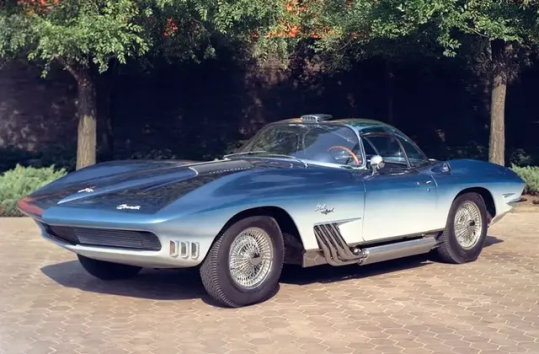
Like the Corvette itself, the notion of a concept (or show) car was born in the U.S., under GM’s roof. Dubbed Buick Y-Job and designed by the legendary Harley J. Earl, the drop-top beauty unveiled in 1940 previewed a series of novel features and design cues that influenced the division’s mass-produced models for over a decade.
When GM decided to build a rival for the European sports cars that were flooding the North American market in the post-WWII years, the same Harley J. Earl was selected to draw it up. To build hype around it, the corporation commissioned Earl and the Chevy team to build a show car which was codenamed EX-122. First shown to the public at the 1953 Motorama in New York City, the concept would become known as the Corvette and with a few minor changes, it entered production a few months later.
Contrary to popular belief, the C1 wasn’t the commercial success that GM had envisioned but it did pique the American buyer’s interest in a homebuilt sportscar, so the corporation poured resources into the development of a successor.
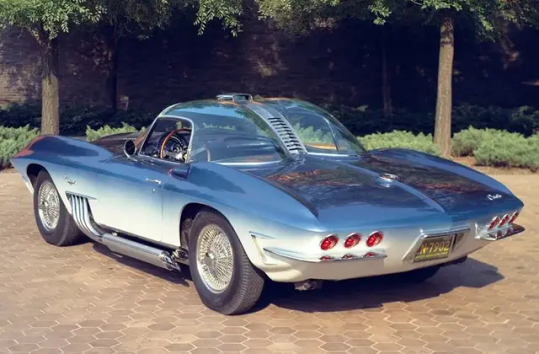
Under the supervision of Styling and Design head Bill Mitchell, the new Corvette’s design was ironed out as early as 1961 and, as they did in the past, the team created a show car that would help promote it. Like the upcoming production version, the vehicle was designed by Larry Shinoda, who drew inspiration from the 1959 XP-87 Stingray racer.
Gone was the curvaceous, European-looking theme of the C1, with the ‘Vette’s body now boasting far more aggressive lines that look like the sleek shortfin mako shark. Although it was officially codenamed XP-755, the concept car unveiled at the 1962 International Automobile Show would become known as the Mako Shark due to its unmistakable resemblance to the fast-moving predator.
One aspect that contributed to this was the car’s spectacular paintwork. Legend has it that, upon returning from a fishing trip with a taxidermized shark head (some reports state that it was a complete shark) as a trophy, Bill Mitchell hung it in his office and instructed the design team to replicate its coloring on the show car.

Several attempts to make such an impossible task possible were made but Mitchell was not satisfied. The styling head would put the trophy next to the car and since the paint was not identical, he instructed the team to try again. Annoyed by this, an unnamed member of the team snuck into Mitchell’s office one night, took his beloved trophy, and airbrushed it to look like the car’s latest paint job. In the end, the boss couldn’t tell the difference and, since the car and the shark now looked the same, he finally gave his frustrated team the thumbs up.
The Mako Shark managed to draw enough interest in the C2 as it became a fan favorite at every event where it was showcased. It underwent styling and detail changes over time, gaining front fascia and interior upgrades. The car also lost the distinctive "double-bubble" canopy borrowed from a previous concept and became a pure convertible.
Apart from the unique paint and several flamboyant design cues, its overall styling made it to the mass-produced model. which became the commercial hit that its predecessor never was.
Unlike other GM concepts that were eventually destroyed, the original Shark is still alive and well, residing in the corporation’s Heritage Collection located in Sterling Heights, Michigan.

Just a few years after the debut of the Mako Shark, the Corvette team began work on the third-generation model which would roll out the factory gates in 1967. While the mid-engine format proposed by Zora Arkus-Duntov with his race-bred CERV II concept was considered, Bill Mitchell's conventional front-engine design was deemed more marketable by GM’s top brass.
Under the codename XP-830, the development of a new concept car kicked off in early 1964 with the C2’s existing chassis as the base. For the C3, Mitchell wanted "a narrow, slim, center section and coupe body, a tapered tail, an all-of-a-piece blending of the upper and lower portions of the body through the center (avoiding the look of a roof added to a body), and prominent wheels with their protective fenders distinctly separate from the main body, yet grafted organically to it.”
Turning this vision into reality took about a year to pull off. Mitchell’s designers completed a full-size, non-running version in March 1965, and days later, key members of GM’s management were invited to see it. Everyone was blown away and unanimously decided that it had to go into production as soon as possible.

Finished in a similar paint and carrying the same Mako Shark moniker as the XP-755, the non-functional concept was first shown to the public at the New York International Auto Show just a month later. While its exterior design was praised by everyone, its futuristic interior received a lot of criticism for ergonomically-nightmarish such as the yoke-style steering wheel with its complicated transmission controls.
Behind closed doors, the development team was working on a running model that would address these issues and in October 1965, it made its public debut in France, at the Paris Auto Show. Powered by the highly successful and versatile 427 version of Chevy’s Mark IV big block, the functional Mako Shark II had rear-exiting exhausts -as opposed to the static model’s side-mounted variants – and a conventional steering wheel with column-fitted transmission controls.
Although it’s unquestionably the most influential concept car to ever don Corvette badges, shaping the look of America’s popular sports car for generations to come, the story of the second Shark, in either non-functional or functional form, didn’t have a happy ending. Unlike its predecessor which enjoys retirement on top of a pedestal inside GM’s Heritage Collection, the static version was dismantled while the running model was transformed into another show car.
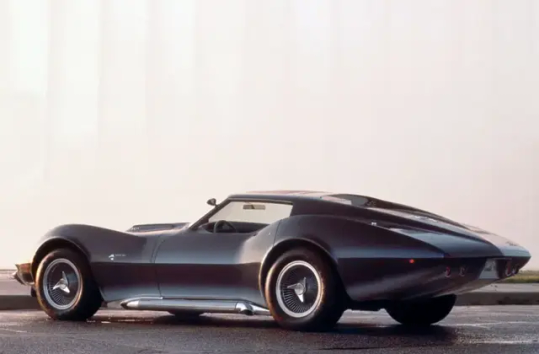
This leads us to the third most influential Corvette concept. Completed in 1969 it left the Mako Shark name behind (but not the now-iconic paint) and became known as the Manta Ray.
Its front fascia remained largely the same, with the only additions being an extended bumper ring around the vents and a chin spoiler mounted underneath.
On the sides, the Manta Ray featured functional exhausts that were masterfully integrated into rocker panels, but its most distinct upgrade was the profusely elongated, tail. The now-classic four taillights layout was tucked under the rear deck line and a pair of pop-up flaps that reflected light from upward-facing lamps were added. You can see rare footage of them in action below, thanks to the video posted on YouTube by DtRockstar1
youtube
The reshaped tail flowed into a sweeping, scooped-out, stinger-style roof that helped accentuate the aggressiveness of the overall design. Speaking of aggressiveness, the car was powered by the newly introduced ZL1 427-ci (7.0-liter) V8, a lightweight, all-aluminum monster that could spit out no less than 430 hp.
Even if the Mako Shark II had to be sacrificed to build it, the Manta Ray was in itself a work of automotive art that captivated the hearts and minds of sports car enthusiasts. Thankfully, after its transformation, GM decided to keep it and it joined the first Shark in the corporation’s Heritage Collection.
Many other concept cars that carried the Corvette nameplate followed in the next five decades, but none were as pure nor as influential as these three. They inspired the look of every mass-produced Corvette generation that followed, including the current and radically different C8.
19 notes
·
View notes
Text

This is an appreciation post, pure and simple.

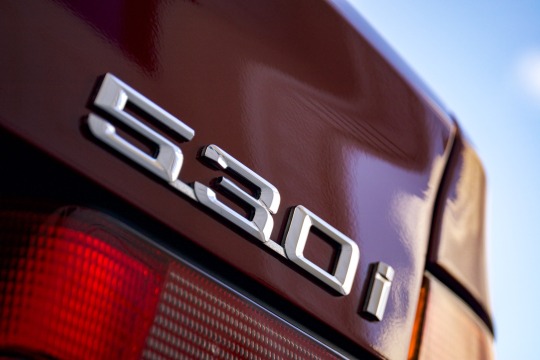
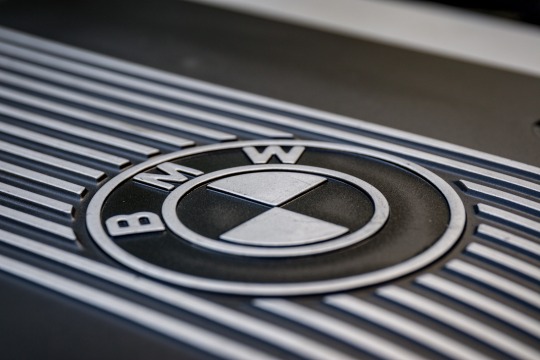


This house loves and cherishes its E34 5 Series friends, especially 1-owner survivors with V8s and 6-speeds (yes, you read that right! The E34 530i was in fact a V8 for a time - it did start life as an I6 earlier in the generation, but late examples like this 1995 were fitted with a low-displacement V8 that delivered smoother, more linear power, and a whole lotta more smiles when paired with BMW's quick shifter and snappy manual gearbox)!
The E34 represented a lot of firsts for the 5, including the introduction of the V8 for the first time in BMWs midsize saloon, the introduction of AWD to line in the 525iX, rudimentary stability (ASC) and traction control (ASC+T) programmes for enhanced control, and rack and pinion steering in AWD models (mostly for packaging and logic) for superior driveability!
It goes without saying that the design of the E34 is one that has stood strongly against the test of time and continues to garner well-deserved recognition for its subtle cues, muscular traits, and elegant proportions. The distinctively aggressive front fascia coupled with the gentler gradation on all of its sharper corners (compared to previous generations), and the stoic, upright design of the tail end really makes the E34 a standout in a sea of bland sameness all too common for the era.
And while I personally hold the E39 in the highest esteem of design and refinement - at least as far as the 5 Series goes - there's no doubt the E34 will go down among BMW's greatest achievements of all time.
And this one is one of its best surviving non-M examples!
#bmw#bmw 530i#bmw 5 series#bmw e34#e34#e34 530i#v8#german cars#classic cars#retro cars#manual transmission#car photography#cars of tumblr#cars of new england
9 notes
·
View notes
Photo

New Post has been published on https://fastmusclecar.com/unleashing-the-power-chevrolet-camaro-z28-5th-generation-specs/muscle-cars/
Unleashing the Power: Chevrolet Camaro Z28 5th Generation Specs
The Chevrolet Camaro is an iconic American muscle car that has been a favorite among car enthusiasts since its debut in 1966. The fifth generation Camaro, which ran from 2010 to 2015, was no exception. Among the models available in this generation, the Camaro Z28 stands out for its impressive specs and performance. In this article, we’ll take a closer look at the Chevrolet Camaro Z28 5th generation specs and what makes it a true powerhouse on the road.
Introduction
The Chevrolet Camaro Z28 5th generation is a high-performance version of the Camaro that was introduced in 2014. It was designed to be the ultimate track-ready Camaro, with a focus on performance and handling. The Z28 is powered by a 7.0-liter LS7 V8 engine, which produces 505 horsepower and 481 lb-ft of torque.
Engine and Performance
The LS7 engine is one of the most powerful naturally aspirated engines ever put in a Camaro. It is based on the engine used in the Corvette Z06, but has been modified for the Camaro. The engine is paired with a six-speed manual transmission, which is the only transmission available for the Z28.
The Camaro Z28 also comes with a number of performance features that make it stand out from other Camaros. It has a special track-tuned suspension, with unique springs, dampers, and anti-roll bars. It also has lightweight wheels and brakes, which help to reduce the car’s weight and improve its handling.
The Z28’s performance is truly impressive. It can go from 0 to 60 mph in just 4.4 seconds, and has a top speed of 184 mph. It can also stop from 60 mph in just 107 feet, thanks to its high-performance brakes.
Exterior Design
The Camaro Z28 has a distinctive exterior design that sets it apart from other Camaros. It has a more aggressive front fascia, with a larger grille and a unique hood that features a functional air extractor. The car also has a rear spoiler and a special rear diffuser, which help to improve its aerodynamics.
One of the most unique features of the Z28’s exterior design is its wheels. The car comes with lightweight 19-inch forged aluminum wheels, which are wrapped in high-performance Pirelli PZero Trofeo R tires. These tires are designed to provide maximum grip on the track, and are some of the most advanced tires available for any car.
Interior Design
The interior of the Camaro Z28 is designed with performance in mind. It has Recaro sport seats, which provide excellent support during high-speed maneuvers. The seats are also covered in microfiber suede, which helps to keep the driver and passengers in place during hard cornering.
The Z28’s interior also has a number of other performance-oriented features. It has a flat-bottom steering wheel, which provides better grip and control during spirited driving. The car also has a special performance data recorder, which allows drivers to track their lap times and other performance metrics.
Price and Availability
The Camaro Z28 was only produced for the 2014 and 2015 model years, and was a limited-production model. As a result, it is now a rare and highly sought-after car among collectors and enthusiasts.
When it was first released, the Camaro Z28 had a starting price of around $75,000. Today, a well-maintained Z28 can fetch prices upwards of $50,000 on the used car market.
Conclusion
The Chevrolet Camaro Z28 5th generation is a true powerhouse on the road, with impressive specs and a design that is focused on performance. The LS7 engine is one of the most powerful ever put in a Camaro, and is paired with a track-tuned suspension, lightweight wheels and brakes, and high-performance tires to create a car that is built for the racetrack.
The Z28’s unique exterior and interior design features further set it apart from other Camaros, with a distinctive look that is both aggressive and functional. And while the Z28 was only produced for a limited time, its status as a collector’s item only adds to its appeal.
Overall, the Chevrolet Camaro Z28 5th generation is a car that truly unleashes the power of American muscle, and continues to be a favorite among car enthusiasts to this day.
FAQs
can we use Chevrolet Camaro Z28 5th generation for towing with fifth wheel
No, the Chevrolet Camaro Z28 5th generation is not suitable for towing with a fifth wheel hitch. This high-performance sports car is designed for speed and agility on the racetrack, and is not equipped with the necessary components for towing heavy loads. Towing with a fifth wheel hitch requires a vehicle with a specialized towing package, which typically includes a heavy-duty frame, suspension, and braking system, as well as a powerful engine and transmission designed for towing. If you need a vehicle for towing with a fifth wheel hitch, it is best to look for a truck or SUV that is specifically designed for that purpose.
What is the top speed of the Chevrolet Camaro Z28 5th generation?
The top speed of the Chevrolet Camaro Z28 5th generation is 184 mph.
What is the horsepower of the LS7 engine?
The LS7 engine in the Chevrolet Camaro Z28 5th generation produces 505 horsepower.
What is the torque of the LS7 engine?
The LS7 engine in the Chevrolet Camaro Z28 5th generation produces 481 lb-ft of torque.
What is the acceleration time from 0 to 60 mph for the Chevrolet Camaro Z28 5th generation?
The Chevrolet Camaro Z28 5th generation has an acceleration time of 4.0 seconds from 0 to 60 mph.
How many units of the Chevrolet Camaro Z28 5th generation were produced?
Only 7,199 units of the Chevrolet Camaro Z28 5th generation were produced between 2014 and 2015.
What is the fuel economy of the Chevrolet Camaro Z28 5th generation?
The fuel economy of the Chevrolet Camaro Z28 5th generation is 13 mpg city and 19 mpg highway.
What is the price of the Chevrolet Camaro Z28 5th generation?
The original MSRP of the Chevrolet Camaro Z28 5th generation was around $75,000.
How does the Chevrolet Camaro Z28 5th generation compare to other muscle cars?
The Chevrolet Camaro Z28 5th generation is considered one of the best muscle cars ever made, with a powerful engine, track-tuned suspension, and unique design features that set it apart from other muscle cars.
Is the Chevrolet Camaro Z28 5th generation a good investment for car collectors?
Yes, the Chevrolet Camaro Z28 5th generation is highly sought after by car collectors due to its limited production and high-performance specs, making it a good investment for those interested in collecting muscle cars.
5 notes
·
View notes
Text
Maserati Project24 track-only supercar announced
Maserati Project24 track-only supercar announced
Maserati has announced a new limited-edition track-only supercar called the Project24.
The Maserati Project24 features a radical design with an aggressive front end. The low-slung front fascia neatly integrates the familiar Maserati grille. The mid-engined racer has an adjustable rear wing with a shark fin and LED tail lights that look like the Trident logo.
The Project24 uses the same…
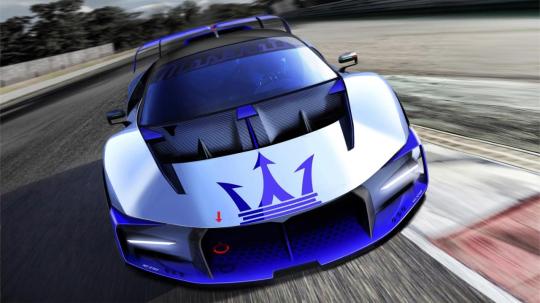
View On WordPress
2 notes
·
View notes
Text
2025 Toyota Camry: A Comprehensive Overview
Introduction
The 2025 Toyota Camry continues the legacy of one of the world's best-selling sedans. Known for its reliability, comfort, and innovative features, the new Camry model is set to impress with advanced technology, enhanced performance, and sleek design. Whether you're considering a family car or a daily commuter, the 2025 Toyota Camry promises to be a top contender in its class.
Design and Exterior
Sleek and Modern Aesthetics
The 2025 Toyota Camry features a bold and dynamic exterior design. The front fascia has been updated with a more aggressive grille, sleek LED headlights, and a sculpted hood that gives the car a sporty yet elegant appearance. The aerodynamic body lines not only enhance the car's visual appeal but also improve its fuel efficiency.
Color Options
Toyota offers a range of color options for the 2025 Camry, including classic shades like Super White and Celestial Silver, as well as new, vibrant colors like Ruby Flare Pearl and Blue Streak Metallic.
Interior Comfort and Features
Luxurious Cabin
The interior of the 2025 Camry is designed with comfort and convenience in mind. Premium materials, such as leather-trimmed seats and soft-touch surfaces, are used throughout the cabin. The spacious layout ensures ample legroom and headroom for all passengers.
Advanced Technology
The 2025 Camry is equipped with the latest technology to enhance your driving experience. A large touchscreen infotainment system with Apple CarPlay and Android Auto integration allows seamless connectivity. Additionally, the available premium audio system provides high-quality sound for your favorite music and podcasts.
Performance and Engine Options
Efficient and Powerful Engines
The 2025 Toyota Camry offers a variety of engine options to suit different driving preferences. The standard 2.5-liter 4-cylinder engine delivers a balance of power and fuel efficiency, while the available 3.5-liter V6 engine offers more robust performance for those seeking a sportier drive.
Hybrid Variant
For eco-conscious drivers, the 2025 Camry Hybrid combines a 2.5-liter engine with an electric motor to provide excellent fuel economy without compromising on power. The hybrid system also contributes to lower emissions, making it an environmentally friendly choice.
Safety and Driver Assistance
Comprehensive Safety Features
Safety is a top priority for Toyota, and the 2025 Camry comes equipped with a suite of advanced safety features. The Toyota Safety Sense™ 2.5+ package includes pre-collision warning, lane departure alert, adaptive cruise control, and more, ensuring peace of mind on every journey.
Driver Assistance Technology
Additional driver assistance technologies, such as blind-spot monitoring, rear cross-traffic alert, and a 360-degree camera system, provide extra support to help you navigate various driving situations with confidence.
Fuel Efficiency
Impressive MPG Ratings
The 2025 Toyota Camry is designed to be fuel-efficient, with the 4-cylinder engine achieving impressive MPG ratings. The hybrid variant further enhances fuel savings, making it an economical choice for long-distance travel and daily commuting.
Pricing and Availability
Competitive Pricing
Toyota has priced the 2025 Camry competitively, offering great value for the features and performance it delivers. The base model starts at a reasonable price, with higher trims and additional packages available for those seeking more luxury and advanced technology.
Availability
The 2025 Toyota Camry is expected to be available at dealerships nationwide by the fall of 2024. Pre-orders can be placed through Toyota's official website or by visiting your local dealership.
Conclusion
The 2025 Toyota Camry is a well-rounded sedan that offers a blend of style, performance, and advanced technology. Whether you're looking for a reliable family car or a comfortable commuter vehicle, the new Camry has something to offer. With its impressive fuel efficiency, comprehensive safety features, and modern design, the 2025 Camry is set to continue Toyota's tradition of excellence.
#car blog#cars#luxury car#electric cars#sports cars#toyota motor corporation#camry#toyota camry#hybrid cars#hybrid#Toyota Motors#luxury sedan#luxurious#viral trends#mercedes#viralpost#viral#trending#tudung viral
0 notes
Text
2024 Hyundai Sonata N Line: A Fusion of Sportiness
The 2024 Hyundai Sonata N Line is redefining the midsize sedan market with its bold design, dynamic performance, and advanced features. This sporty variant of the popular Sonata lineup is perfect for drivers seeking an exhilarating driving experience without compromising on style and comfort.
Striking and Sporty Design
The 2024 Hyundai Sonata N Line stands out with its aggressive, sporty design. The distinctive front fascia, featuring a cascading grille and sleek LED headlights, gives the Sonata N Line a commanding presence on the road. Sporty side skirts, a rear diffuser, and dual twin exhaust outlets further enhance its athletic appeal. With exclusive 19-inch alloy wheels and a range of vibrant colors, the Sonata N Line exudes confidence and style.
High-Performance Engineering
Under the hood, the 2024 Sonata N Line is powered by a robust 2.5-liter turbocharged GDI engine, delivering an impressive 290 horsepower and 311 lb-ft of torque. Paired with an 8-speed dual-clutch transmission (DCT), this powertrain ensures quick acceleration and smooth gear shifts. The sport-tuned suspension and steering system provide precise handling and a responsive driving experience, making every journey exciting.
Advanced Technology and Connectivity
The 2024 Hyundai Sonata N Line is equipped with cutting-edge technology to keep you connected and entertained. The 10.25-inch touchscreen infotainment system supports Apple CarPlay and Android Auto, offering seamless smartphone integration. The available Bose premium audio system delivers crystal-clear sound, enhancing your driving experience. Additionally, the digital instrument cluster provides essential driving information at a glance, keeping you informed and focused.
Comprehensive Safety Features
Safety is a priority in the 2024 Sonata N Line, which comes with Hyundai's SmartSense suite of advanced safety and driver assistance features. These include Forward Collision-Avoidance Assist, Blind-Spot Collision-Avoidance Assist, Lane Keeping Assist, and Smart Cruise Control with Stop & Go. The robust body structure and advanced airbag system offer additional protection, ensuring peace of mind on every drive.
Luxurious and Sporty Interior
Inside, the 2024 Sonata N Line combines luxury with sportiness. The cabin features N Line sport seats with leather bolsters and red stitching, providing both comfort and support. The leather-wrapped steering wheel and aluminum pedals add to the sporty ambiance. With ample legroom and premium materials, the Sonata N Line ensures a comfortable and enjoyable ride for all passengers.
Conclusion
The 2024 Hyundai Sonata N Line is a perfect blend of sportiness, advanced technology, and luxurious comfort. Its powerful performance, coupled with a striking design and comprehensive safety features, makes it an ideal choice for drivers seeking a midsize sedan with a sporty edge.
To experience the thrill of the 2024 Hyundai Sonata N Line, visit your local Hyundai dealership and schedule a test drive today. Discover why this sporty sedan is turning heads and setting new standards in the automotive world. Experience the perfect combination of performance and sophistication with the 2024 Sonata N Line.
#michel sedan#sedan#luxury sedan#sports sedan#sports cars#automotive#classic car#autos#automobile#luxury car#luxury candles#luxury cabin#hyundai#electric vehicles#cars#Hyundai Sonota#mazda#usa#usagi tsukino#usa news#usa is a terrorist state#usa politics#united states#americans#america#journalism#geopolitics#exotic cars#self care#fast cars
0 notes
Text
Kawasaki new arrival of a limited-edition ZX-4RR model.

Kawasaki the imminent India launch of the limited edition Ninja ZX-4RR bike. Known for its performance the ZX-4RR will be imported in limited numbers.
The news suggests an imminent India launch of the sporty motorbike. Kawasaki is known for its advanced performance and eye-catching design and the ZX-4RR is no exception. Though the company has revealed few details about the ride it is evident that being a complete built-up unit it will be imported to the Indian market in limited numbers. Kawasaki, the renowned Japanese motorbike manufacturer, is teasing an imminent launch of the limited edition Kawasaki Ninja ZX-4RR bike supersport bike in India. This exciting revelation promises an aggressive design conception for the ZX-4RR, a glimpse of which was exhibited in a teaser concentrating on its front fascia.
0 notes
Text
Enhancing Performance and Style: Jaguar XE Upgrades and Jaguar XF Body Kit
In the world of automotive customization, every detail counts. From sleek body lines to striking grilles, enthusiasts seek ways to elevate their vehicles' aesthetics. Two popular choices for enhancing style are the Audi A1 grill and Alfa Romeo body kit. Let's delve into how these components add a profound touch to your ride.
Audi A1 Grill: Elevating Elegance The Audi A1 grill is more than just a functional component; it's a statement of sophistication. Crafted with precision and attention to detail, this grill transforms the front fascia of the Audi A1, elevating its presence on the road.
Design Excellence:
The Audi A1 grill boasts a distinct design characterized by its honeycomb pattern and chrome accents. This signature style exudes elegance and modernity, instantly catching the eye of onlookers.
Seamless Integration:
One of the remarkable features of the Audi A1 grill is its seamless integration with the vehicle's body. Whether in glossy black or metallic finish, it enhances the car's overall aesthetic appeal without compromising its original design.
Personalization Options:
Enthusiasts appreciate the range of customization options available with the Audi A1 grill. From different finishes to optional features like Audi's emblem, owners can tailor the grill to suit their unique preferences, making a profound statement with every drive.
Alfa Romeo Body Kit: Sculpting Performance The Alfa Romeo body kit is designed to do more than just enhance aesthetics; it's engineered to improve performance and aerodynamics while making a bold visual statement on the road.
Dynamic Styling:
Featuring aggressive lines and aerodynamic enhancements, the Alfa Romeo body kit commands attention. From front splitters to rear diffusers, each component is meticulously crafted to complement the vehicle's design language and improve its aerodynamic efficiency.
Performance Enhancement:
Beyond aesthetics, the Alfa Romeo body kit is engineered to enhance performance. By reducing drag and optimizing airflow, it improves stability at high speeds and cornering, resulting in a more exhilarating driving experience.
Unmatched Quality:
Alfa Romeo's commitment to quality is evident in every detail of the body kit. Constructed from high-quality materials and rigorously tested for durability, it offers unmatched reliability and longevity, ensuring that your vehicle looks stunning for years to come.
Customizing your vehicle with components like the Audi A1 grill and Alfa Romeo body kit allows you to make a profound statement on the road. Whether you're seeking elegance or performance, these enhancements offer a perfect blend of style and functionality. Explore the possibilities of vehicle customization on vehiclerevolution.com and embark on a journey to elevate your driving experience.
0 notes
Link
Gearheads in India, rejoice! The highly anticipated 2024 Aston Martin Vantage has officially arrived, gracing showrooms with its sleek design and ferocious performance. This latest iteration boasts the most significant powertrain update in the Vantage's history, complemented by sharper aesthetics and a comprehensive suite of modern features. Buckle up as we delve into the details of this automotive masterpiece. A Sharpened Silhouette: The 2024 Vantage's Exterior A mere glance at the 2024 Vantage reveals its undeniable lineage. The imposing front fascia bears a striking resemblance to the iconic One-77, featuring a significantly enlarged grille that exudes an air of aggressive elegance. The redesigned headlights further enhance the muscular stance, perfectly complementing the car's dynamic character. 2024 Aston Martin Vantage Roars Moving to the sides, the Vantage is equipped with stunning 21-inch multi-spoke alloy wheels that add a touch of contemporary flair. The rear boasts a pair of slim and elegantly curved taillights that stretch gracefully across the body, completing the car's captivating exterior design. A Luxurious Cockpit: Where Sport Meets Sophistication Step inside the 2024 Vantage, and you'll be greeted by a cabin that seamlessly blends sportiness with luxurious comfort. Discerning drivers will find echoes of the DB12's interior design, evident in the modern design elements and the retention of essential physical controls for a more intuitive driving experience. Aston Martin maintains the Vantage's performance-oriented character through the inclusion of sleek air conditioning vents and bucket seats. These elements are further accentuated by contrasting yellow stitching on the doors, injecting a touch of vibrancy into the cabin. Beyond aesthetics, the 2024 Vantage comes equipped with an array of features designed to elevate every journey. A dual-screen setup featuring a 10.25-inch infotainment unit and a 10.25-inch digital driver's display provides intuitive control and crystal-clear information. For added convenience, wireless phone charging is readily available, while a premium 15-speaker Bowers and Wilkins audio system promises an immersive listening experience. In terms of safety, the 2024 Vantage offers peace of mind with a comprehensive suite of Advanced Driver Assistance Systems (ADAS). These features include forward collision warning, autonomous emergency braking, and traffic sign recognition, ensuring a confident and secure driving experience. Unleashing the Beast: The 2024 Vantage's Powertrain The heart of the 2024 Vantage lies in its exhilarating powertrain. Aston Martin equips this beast with a 4-liter twin-turbo V8 petrol engine, promising an unforgettable driving experience. Let's delve into the technical specifications: Engine: 4-liter Twin-turbo V8 Power: 665 PS Torque: 800 Nm Transmission: 8-speed Automatic 0-100 km/h: 3.4 seconds Aston Martin engineers meticulously crafted the Vantage to achieve a perfect 50:50 weight distribution. This, coupled with enhanced mechanical components like an electronic rear differential and adaptive dampers, ensures a balanced and exhilarating driving experience without compromising in-cabin comfort. Facing the Competition: The 2024 Vantage's Rivals The 2024 Aston Martin Vantage enters an elite arena, poised to compete with other titans in the luxury sports car segment. Its key rivals include the McLaren GT and the Ferrari Roma. These competitors offer comparable performance figures and boast their own unique design philosophies, ensuring a thrilling choice for discerning buyers.
#2024AstonMartinVantageIndialaunch#2024AstonMartinVantageRoars#AstonMartinVantagecompetitors#AstonMartinVantagefeatures#AstonMartinVantagepriceIndia#AstonMartinVantagespecifications#luxurysportscarsIndia#V8sportscarIndia
0 notes
Text
2025 Honda Element: A Revolutionary Return to Versatility
Exterior Design
The 2025 Honda Element makes a striking comeback with a bold and rugged exterior design that pays homage to its adventurous spirit. Its boxy silhouette remains iconic, now enhanced with sharp lines and angular accents that exude a modern and aggressive stance.
The front fascia is dominated by a wide grille featuring the signature Honda “H” emblem. Flanking the grille are sleek…
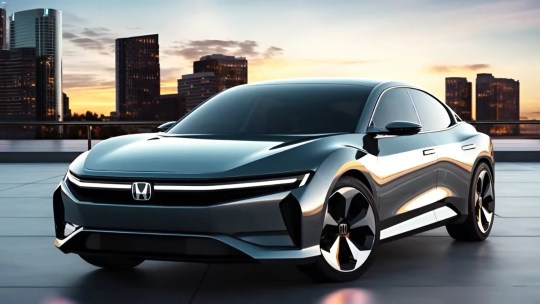
View On WordPress
0 notes
Text
Tata Punch EV vs Tata Nexon EV

In the dynamic realm of electric vehicles (EVs) in India, Tata Motors has been making significant strides with its latest offerings, particularly the Tata Punch EV and the Tata Nexon EV. These two vehicles stand out as formidable contenders in the burgeoning market, each bringing its own set of features and capabilities. Let's delve into a comprehensive comparison between these two electric SUVs, covering various aspects such as design, practicality, price, performance, efficiency, range, and safety features.
Starting with design, the Tata Punch EV boasts a distinctive urban-centric appeal with its Acti.ev architecture, providing a raised ground clearance and unique design elements like a blanked-out grille and signature LED light strips. On the other hand, the 2023 facelift version of the Tata Nexon EV showcases refreshed exterior designs, including redesigned DRLs and headlights, along with a modern front fascia and updated color options.
In terms of practicality, while the Tata Punch EV excels as an urban runabout with its compact size and comfortable cabin, the Tata Nexon EV offers versatility with two variants catering to diverse driving needs, along with an extended battery range.
Moving on to price and features, the Tata Punch EV comes with an aggressive price tag and a plethora of features, including advanced safety features and a high-tech interior. On the contrary, the pricing for the Tata Nexon EV facelift has yet to be disclosed, but it is expected to offer a premium experience with its range of variants and advanced features.
When it comes to power, performance, and probabilities, both vehicles offer smooth acceleration and multiple driving modes for varied driving scenarios. The Tata Nexon EV, in particular, promises an engaging driving experience with its powerful motor and extended battery range options.
Efficiency and range are crucial factors in the EV segment, and both the Tata Punch EV and Nexon EV offer competitive figures, along with various charging solutions to meet the needs of different users.
In terms of safety, both vehicles prioritize the well-being of passengers with a range of safety features, ensuring a secure driving experience on Indian roads.
In conclusion, the Tata Punch EV and Nexon EV present compelling options in the electric SUV segment, catering to different preferences and driving needs. As Tata Motors continues to innovate and evolve in the electric vehicle space, these offerings reflect their commitment to sustainability and competitiveness in the Indian market. Stay tuned for the official launch and detailed reviews of these electric SUVs, as they pave the way for a greener and electrifying future on Indian roads.
To read more, click here.
0 notes
Text

2024 BMW M3 CS @area_cars_exclusive
youtube
Key Features of the BMW M3 CS:
Unrivaled Performance: The BMW M3 CS is powered by a potent inline-six engine, delivering exhilarating acceleration and razor-sharp handling. With enhanced aerodynamics and chassis tuning, every twist and turn becomes an opportunity to unleash its full potential.
Exclusive Design: Stand out from the crowd with the distinctive design of the M3 CS. From its aggressive front fascia to its unique lightweight alloy wheels, every detail reflects its high-performance pedigree.
Luxurious Interior: Step inside the cockpit of the M3 CS and experience true luxury. Premium materials, including Merino leather upholstery and carbon fiber trim, create an environment that blends comfort with racing-inspired style.
Cutting-Edge Technology: Stay connected and in control with the latest technology features in the BMW M3 CS. From the intuitive iDrive infotainment system to the advanced driver assistance systems, every aspect of the driving experience is seamlessly integrated.
Track-Ready Performance: With track-focused features such as M Compound brakes and adaptive M suspension, the BMW M3 CS is equally at home on the racetrack as it is on the open road. Push the limits of performance and experience driving nirvana like never before.
Discover the thrill of driving perfection with the BMW M3 CS. Whether carving through corners or cruising down the highway, this high-performance sedan delivers an adrenaline-fueled experience that is second to none.
________________________________________________________________________
Subscribe RaGoCars YouTube channel: https://www.youtube.com/@RaGoCars?sub_confirmation=1
Instagram: https://www.instagram.com/ragocars
________________________________________________________________________
▪️
#bmw #m3cs #bmwm3cs #cs #m3 #bmwm3 #bmw3 #bmw3series #sedan #wild #carbon #cars #instacars #fashion #love #best #car #on #stock #areacars #areacars_berlin #ragocars
#ragocars#luxury#success#amazingcars247#cars#bmw#youtube#bmwm3cs#new bmw#BMW m3#m3 cs#bmw car#bmwcars
1 note
·
View note
Photo

New Post has been published on https://fastmusclecar.com/driving-a-ford-mustang-muscle-car-5-of-the-best/muscle-cars/
Driving a Ford Mustang Muscle Car: 5 Of The Best
2020 Ford Mustang GT500
First up is the 2020 Ford Mustang GT500, powered by a 5.2-liter V8 engine that delivers 760 horsepower and 625 lb-ft of torque. It can go from 0 to 60 mph in around 3.5 seconds and has a top speed of 180 mph. The engine is paired with a seven-speed dual-clutch automatic transmission that delivers smooth and precise shifts.
The GT500 has been designed to be aerodynamically efficient, with a front splitter, a rear wing, and other aerodynamic features that help keep the car stable at high speeds. he GT500’s suspension has been tuned to provide a smooth ride and excellent handling. It features MagneRide dampers that adjust the suspension in real-time to changing road conditions. The GT500 has massive Brembo brakes with six-piston front calipers and four-piston rear calipers that provide excellent stopping power.
The GT500’s interior is luxurious and well-appointed, with premium materials and advanced features such as a 12-inch digital instrument cluster, an 8-inch infotainment system, and a premium sound system. The GT500 starts at around $73,995, making it a high-end, performance-oriented car for those who want a genuine American experience.
2013 Ford Mustang Shelby GT500
Next is the 2013 Ford Mustang Shelby GT500, housing a 5.8-liter supercharged V8 engine with 662 horsepower and 661 lb-ft of torque. This model could reach a top speed of 202mph, or when limited 155 mph. The engine was also the most powerful production V8 in the world at the time. The GT500 is capable of accelerating from 0 to 60 mph in just 3.5 seconds.
The 2013 GT500 comes standard with a six-speed manual transmission, which is the only option available. This transmission features a dual-disc clutch and a short-throw shifter for improved performance and precision. The 2013 GT500 features a unique suspension setup that includes a stiffened rear axle, Bilstein dampers, and larger anti-roll bars. These upgrades help to improve the car’s handling and cornering ability.
breaks consist of six-piston calipers with 15-inch rotors, while the rear brakes are four-piston calipers with 13.8-inch rotors. While the GT500’s interior is largely unchanged from the standard Mustang, but it does feature a few unique touches. These include special Shelby-branded Recaro seats, a leather-wrapped steering wheel with contrast stitching, and aluminum pedals.
1968 Ford Mustang Shelby Cobra GT500KR
The 1968 Ford Mustang Shelby Cobra GT500KR was a collaboration between Carroll Shelby and Ford, dubbed ‘King of the Road.’ The 1968 GT500KR was equipped with a 428 cubic-inch Cobra Jet V8 engine that could produce up to 335 horsepower and 440 lb-ft of torque. This engine was mated to a four-speed manual transmission, which helped to deliver an exhilarating driving experience. Additionally, the car featured a heavy-duty suspension system, power disc brakes, and a 3.50:1 rear axle ratio.
The styling on the GT500KR is different to other Mustang models featuring a unique hood scoop, fiberglass hood, and an aggressive front fascia with an integrated grille and driving lights. Only 1,053 were produced, making the vehicle a very expensive collector’s item.
2012 Ford Mustang Boss 302 Laguna Seca edition
The 2012 Ford Mustang Boss 302 Laguna Seca edition is a track-orientated edition of the Mustang Boss 302. The engine in the Boss 302 Laguna Seca is a 5.0-liter V8, providing 444 horsepower and 380 lb-ft of torque, mated to a six-speed manual transmission. Performance-wise, this version of Mustang is good for a 0 to 60 mph time in around 4 seconds, with a top speed of 155 mph.
To handle track competition, the suspension comprises of the adjustable dampers, stiffened springs, and a larger rear stabilizer bar. The car also features a Torsen limited-slip rear differential. The braking system consists of four-piston calipers and 14-inch front rotor from Brembo, with track-focused brake pads.
The exterior of the Boss 302 Laguna Seca is unique with a black front splitter, a rear spoiler, and black graphics on the hood and sides of the car. The car also comes with lightweight 19-inch wheels. inside the car are Recaro sport seats, a unique gauge cluster, and a “Boss 302” logo on the steering wheel. The car also has a rear seat delete, which saves weight and improves performance. Only 750 units were produced, making this version of Mustang a surefire rarity.
1969 Ford Mustang Boss 429
The 1969 Ford Mustang Boss 429 is one of the original and best-performance Mustangs to be produced by Ford. Only 859 units were ever produced, mainly to celebrate the Boss 429 engine, and to win emphatically at NASCAR. The ruling from NASCAR at the time was that a performance vehicle had to produce a minimum of 500 production units for it to compete.
The Boss 429 is powered by a massive 7.0-liter V8 engine that was conservatively rated at 375 horsepower and 450 lb-ft of torque. In reality, the engine produced closer to 500 horsepower and was one of the most powerful engines of its time. The engine was mated to a four-speed manual transmission and a 3.91:1 rear axle ratio.
Standout features of the Boss 429 included front disc brakes, an upgraded suspension system, and a functional hood scoop directing airflow into the engine. The interior was upgraded with high-back bucket seats, a dashboard-mounted tachometer, and Hurst shifter. As expected, this model is super rare and can easily fetch six figures at auction.
3 notes
·
View notes
Text
Unleashing Power: Mike Savage of New Canaan Breaks Down the Primary Features of a Muscle Car
What Are the Primary Features of a Muscle Car? Mike Savage New Canaan
In the world of high-performance automobiles, the term "muscle car" conjures images of raw power, aggressive styling, and an unmistakable presence on the road. Mike Savage, a dedicated car enthusiast from New Canaan, provides a comprehensive breakdown of the primary features that define the essence of a muscle car.
1. Dominant V8 Engines: The Heartbeat of Power
Mike Savage begins by emphasizing the cornerstone of any true muscle car—the engine. "At the core of a muscle car's identity is a robust V8 engine," he declares. "These powerhouses are known for their displacement, producing substantial amounts of torque and horsepower. It's the unmistakable heartbeat that propels these cars forward with authority."
The iconic rumble of a V8 engine is not just a sound; it's a visceral experience that resonates with enthusiasts, signaling the potential for raw, unbridled power. Savage notes, "Whether it's the throaty growl of a classic muscle car or the modern symphony of a high-performance V8, the engine is the soul of a muscle car."
2. Aggressive Styling: Bold and Commanding Presence
One glance at a muscle car, and it's clear that these vehicles are designed to command attention. Mike Savage explores the aesthetic features that contribute to their bold and aggressive styling. "Muscle cars are characterized by their wide, imposing stances, bold grilles, and distinctive body lines," he observes. "These design elements aren't just for show; they convey a sense of power and purpose."
From hood scoops and racing stripes to aggressive front fascias and muscular fender flares, muscle cars boast a visual language that speaks to their performance-oriented nature. "The exterior design is an integral part of the muscle car experience, visually setting them apart from other vehicles on the road," Savage adds.
3. Rear-Wheel Drive Configuration: Power to the Pavement
A critical feature that contributes to the driving dynamics of muscle cars is their rear-wheel drive configuration. Mike Savage explains, "Rear-wheel drive enhances the performance and handling characteristics of muscle cars. It provides a balance of weight distribution, ensuring that the power from the engine is efficiently transferred to the rear wheels for optimal acceleration."
This configuration not only enhances straight-line speed but also allows for controlled and precise handling—a crucial factor for enthusiasts who appreciate the exhilaration of spirited driving.
4. Distinctive Exhaust Note: The Roar of Performance
One of the signature features that sets muscle cars apart is the distinctive exhaust note. "The sound of a muscle car is an integral part of its personality," Savage notes. "It's a symphony that communicates power, aggression, and the promise of thrilling acceleration."
Manufacturers often tune the exhaust systems of muscle cars to produce a deep, resonant rumble that turns heads and sends a clear signal of the car's performance capabilities. The exhaust note becomes an auditory signature, creating a connection between the driver and the raw power beneath the hood.
5. High-Performance Suspension: Balancing Power and Control
To harness the formidable power of a muscle car, a high-performance suspension system is crucial. Mike Savage explains, "Muscle cars are not just about straight-line speed; they need to handle corners with confidence and precision. A well-tuned suspension system allows these cars to navigate twists and turns while maintaining stability and control."
The suspension setup is designed to provide a balance between comfort and performance, ensuring that the driver can enjoy a smooth ride while also experiencing the thrill of dynamic handling.
6. Iconic Models and Heritage: Connecting Past and Present
An essential feature that contributes to the allure of muscle cars is the rich heritage associated with iconic models. "Names like Mustang, Camaro, Challenger, and GTO evoke a sense of nostalgia and a connection to the golden era of muscle cars," Savage remarks. "These models have become legends in their own right, and their heritage is woven into the fabric of automotive history."
Manufacturers often pay homage to the heritage of these iconic models in the design and performance characteristics of modern iterations, creating a bridge that connects the past with the present.
7. Manual Transmission: Engaging the Enthusiast
For purists and enthusiasts who relish a more immersive driving experience, many muscle cars come equipped with a manual transmission option. "The manual transmission is a feature that adds a level of engagement and control for drivers who appreciate the tactile connection with the car," Savage notes. "Shifting through the gears becomes a hands-on experience that enhances the overall enjoyment of driving a muscle car."
While automatic transmissions are prevalent, the availability of manual transmissions in muscle cars underscores the commitment to providing drivers with choices that cater to their preferences.
8. Diverse Performance Options: Tailoring the Driving Experience
Mike Savage emphasizes the diversity of performance options available in the muscle car segment. "Manufacturers understand that enthusiasts have different preferences, so they offer a range of performance packages and options," he explains. "From entry-level models with potent V6 engines to high-performance variants with supercharged V8s, there's a muscle car for every type of driver."
This diversity allows enthusiasts to tailor their muscle car experience, choosing the level of performance that aligns with their driving style and preferences.
In Conclusion: The Symphony of Muscle Car Excellence
As Mike Savage concludes the exploration of the primary features of a muscle car, he sums up the essence of these high-performance marvels. "A muscle car is not just a mode of transportation; it's an experience," he states. "From the thunderous roar of the engine to the commanding presence on the road, every feature contributes to a symphony of power and performance that resonates with the hearts of enthusiasts."
In the world of muscle cars, it's not just about reaching a destination; it's about the journey, the thrill, and the unbridled joy of unleashing the power within. Mike Savage of New Canaan encapsulates the spirit of muscle cars, celebrating the amalgamation of design, engineering, and performance that defines these iconic vehicles.
0 notes